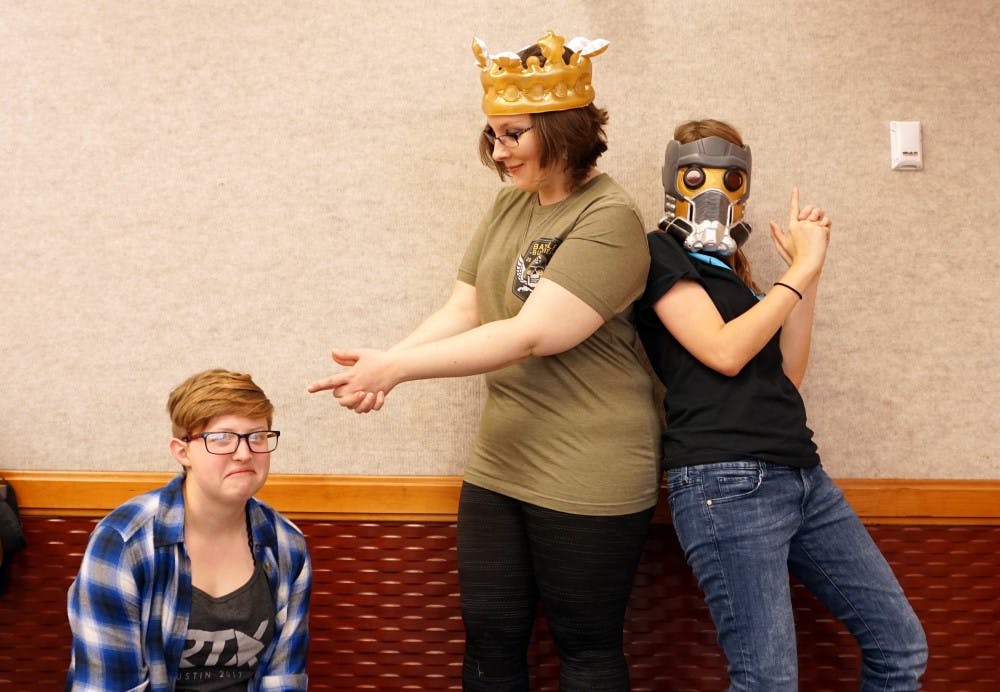Dressing up as someone else can be the best way for some to feel like themselves and escape the stresses of daily life.
The UB Cosplay Club embraces this, giving members a place to gather with people who share their passions for constructing and wearing costumes based on their favorite characters from video games and anime.
Cosplay, a portmanteau of costume and play, has grown in popularity in the U.S. With conventions like San Diego Comic-Con and hundreds of smaller ones in other cities, fans get more opportunities to share their costumes with fellow cosplayers.
The cosplay community has also grown at UB. Cosplay Club President Kaitlyn Johnson said the club was able to co-head UB Con due to the growth of the club. Her persistence and her goal to be an inclusive club allowed it to flourish.
“We try to treat [the club] like a mini-family to the best of our abilities. I try to be as inclusive as possible,” said Johnson, a senior media studies and theater tech major. “The big aspect that all of us here try to push is that anybody can cosplay no matter your age, gender, race or religion.”
Cosplay played an important role in Johnson’s personal growth. She said it allowed her to break out of her shell as she embodied the personalities of the characters.
“It’s a great way to find who you are as a person. In high school, I was the shy little person in the corner. I have changed so much with the club,” Johnson said. “I’m much more out there as a person and I’m more willing to talk and collaborate with people. … It can be very empowering.”
Lee Terwilliger, an adjunct Asian studies professor, talks about the importance of cosplay to fans. Terwilliger says fans often look up to characters and are able to identify with them, which creates a level of comfort while in costume. He said being able to be the character gives fans a stronger relationship to the fandom.
“It’s important to them. You’re a superhero. You’re not an accountant, or someone at human resources or a secretary,” Terwilliger said. “You‘re in control and when you’re in this convention, people will address you as Sailor Moon or the queen or whoever you’re trying to be. It puts you in an interesting situation where you don’t get to see as much.”
Cosplay is more than dressing up for Jacqueline Conroy, an educational psychology and quantitative methods graduate student. She describes cosplay as an outlet for her to play roles she normally can’t play and express aspects of her personality that she does not get to express in other parts of her life.
“To me, [cosplay] allows me to break out of the monotony of being a graduate student and a TA,” Conroy said. “I have to have a serious role a lot. When I’m in cosplay, I can act goofier, it allows me to escape from reality for a little while.”
“I do a lot of Harley Quinn and Mad Moxxi. To me, those are aspects of my personality that I don’t get to show often,” Conroy said. “Mad Moxxi is a hyper sexual character. I normally have to be conservative, but when I’m Moxxi, I can flirt and have fun. I usually choose characters as extensions of outlets that I don’t let out that much.”
However, stigmas within the cosplay communities or fandoms, are normally more pronounced. Johnson said this makes it hard for people to cosplay. Racism and sexism are two big obstacles that cosplayers have to deal with.
“With a fandom, there’s always three percent that is completely horrible to everybody. There are some people who say you can only cosplay this character if you match the ethnicity or race,” Johnson said. “They say you can only cosplay Elsa if you’re white, skinny and tall or cosplay Garnet from ‘Steven Universe’ if you have dark skin. And we’re like ‘no, you can cosplay whoever you want.’”
Drew Matthews*, a graduate student majoring in education, discussed how they break these stigmas in the cosplay community. Matthews, who identifies as gender fluid, describes how cosplay allows them the freedom to choose who they want to be, regardless of gender.
“When I cosplay in a female character, it is because I identify as a female character on that day,” Matthews said. “Being gender fluid, I can pass as a girl and I can dress up as a girl. I can look in the mirror and say I look cute today.”
Matthews said they still faces problems with their identity when they attend conventions. They talk about the clashes in values of other cultures that results in harassment.
“Anime culture is really terrible for those who are male born who dress a little bit more femininely,” Matthews said. “There’s a lot of slurs that anime uses that people use in conventions. People who use those slurs are not a part of the [cosplay] community so they don’t know how it makes us feel. For them, it’s something normalized and humorous.”
Despite the growing interest in cosplay, the strange looks that the community receives are anticipated and still common. Johnson hopes that society will grow to change and be more accepting of the cosplay community.
“People can do very rude and harsh things to us,” Johnson said. “But I tell my club, as long as you’re doing your best, hopefully the people around you will too. But it’s always hard to fight those kind of things.”
*Editor’s note: Names have been changed to protect students’ identities.
Wanly Chen is a staff writer and can be reached at features@ubspectrum.com





